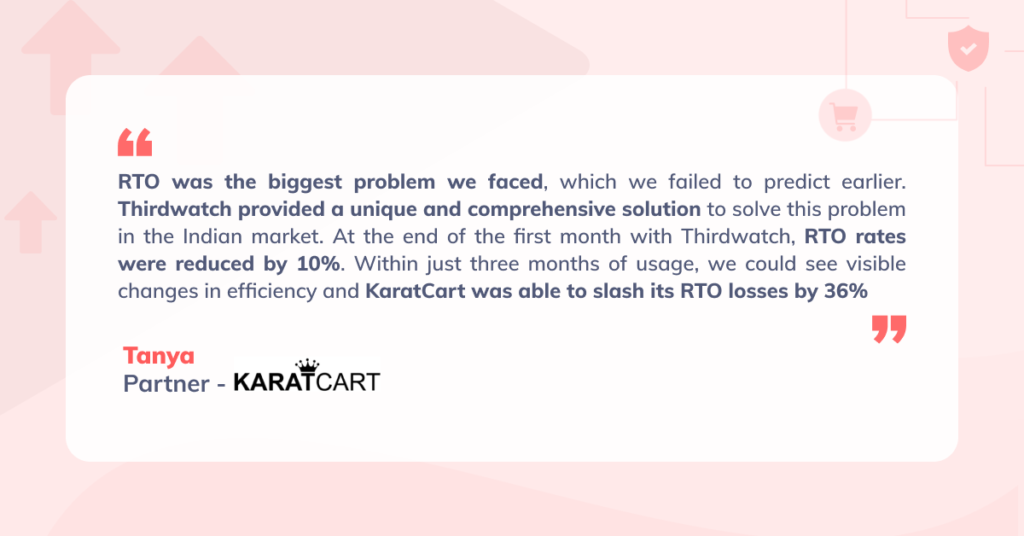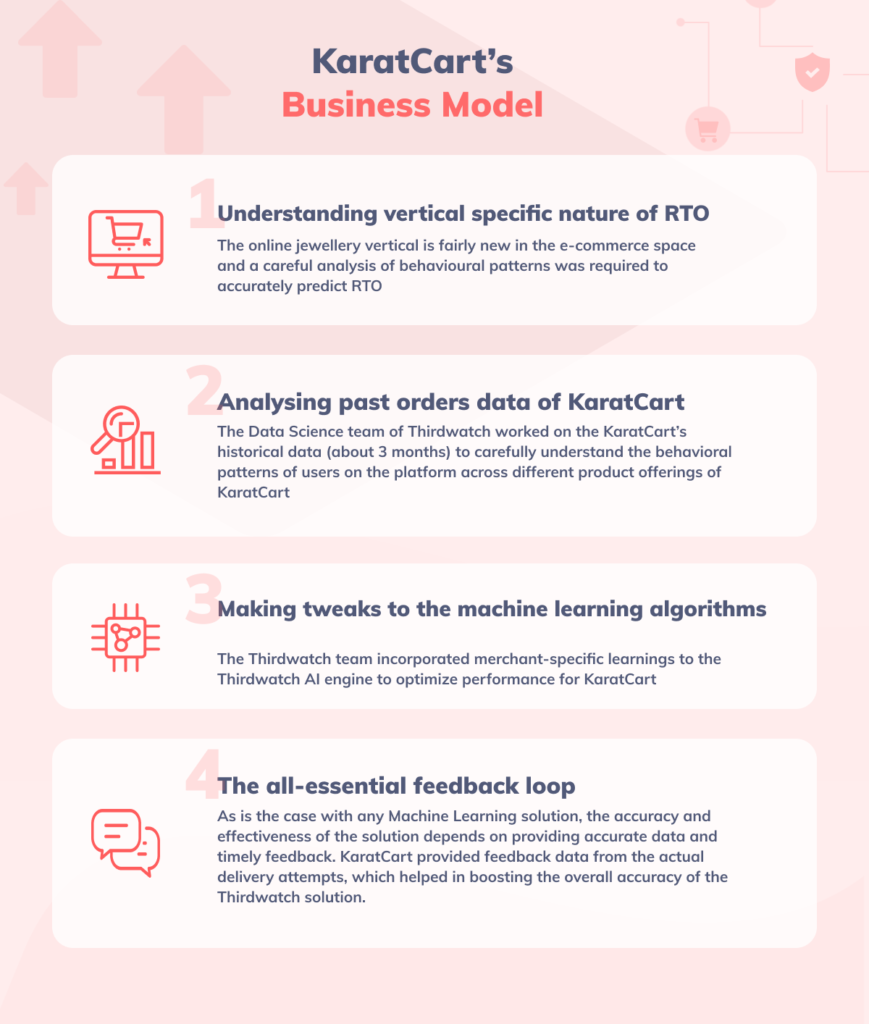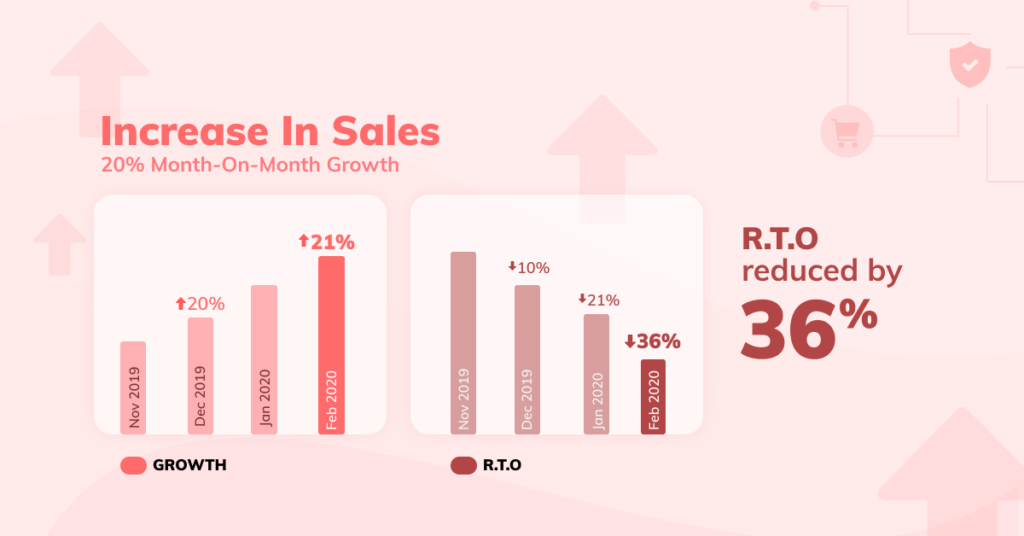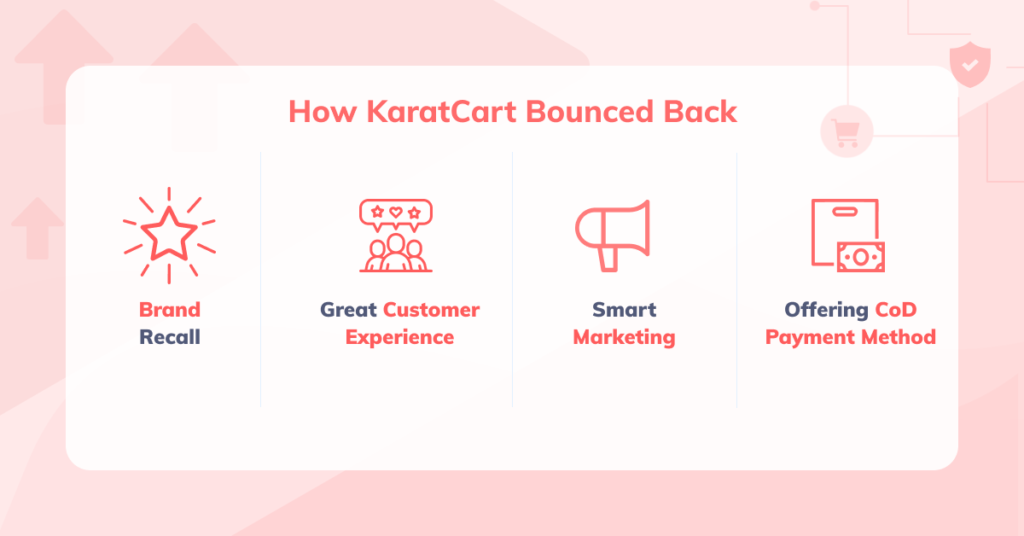Indian e-commerce has seen a booming growth in the last decade, especially in the last few years. The jewellery industry, in particular, has been a favourite among Indian women and has experienced a massive increase in online sales over the last few years or so. According to a McKinsey report, online sales are expected to reach 12% of the overall market by 2020 and to 18% by 2025.
The extent of Indian jewellery companies in e-commerce needs no introduction, with all major brands in the country from Tanishq to PC Jewellers now accepting online orders.
When it comes to the niche market of wedding jewellery, there are either high-end designer jewellery or average designs with unchecked quality from unorganised resellers, consequently increasing prices for end-customers. Born out of the need to eliminate the exorbitant rates and create a brand which speaks quality, thus bringing designer wedding jewellery directly to 120 million shoppers online in India at affordable prices, KaratCart was born.
KaratCart is an online jewellery store for women that specializes in handmade designer jewellery. It is the online distribution arm of Amori Creation, a leading retailer of exclusive jewellery. “Karatcart prides itself for its Design Brilliance and Quality when it comes to Traditional Indian Jewellery at affordable prices. We want to become a brand synonymous with wedding jewellery in India”, says Tanya, partner at KaratCart.
While their brand was selling on marketplaces like Flipkart and Amazon from 3-4 years, they were also looking to commence their own storefront. After long consideration, KaratCart took the leap to start an online store on Shopify in 2019 and they had a pretty solid start from the word go.
Thousands of e-commerce businesses like KaratCart have chosen to start their e-commerce journey on Shopify. Shopify stands to be one of the best e-commerce platforms to set up your store in today’s market. It’s designed to help people build their own, scalable online store with hundreds of built-in features, and tons of apps. Businesses can sell products directly on their website, and across multiple marketplaces and social media.
Thus, KaratCart’s online store came into inception and sales grew at a rate of 20% month on month for the last six months. This move also proved to be highly profitable for their business in a very short span of time. All was well until they faced a problem they hadn’t foreseen– the shockingly high rates of RTO and NDR. In her own words, Tanya feels that this was probably the biggest challenge they faced, which they failed to predict earlier.
What is RTO/NDR and what do they imply?
RTO or Return-To-Origin is defined as the state when orders cannot be delivered and have to be shipped back to the warehouse. An RTO occurs when a customer places an online order and the order doesn’t get delivered due to a multitude of reasons like:
- Incorrect or incomplete address due to which the delivery partners are unable to deliver the orders
- Impulse purchase by the customer where he/she decides to cancel the order due to delay in delivery or finding the same product elsewhere for a better price etc
- Fraudulent orders that were placed without any genuine intent
Another popular terminology for RTO orders is NDR which stands for Non-Delivery Report. Retailers usually receive NDRs from their respective delivery partners for their review and response.
Return-to-Origin puts a significant cost burden on online sellers as they lose a lot of money in shipping the order back and forth. To give some context to this situation, here are some ways in which online sellers lose money with RTO:
- Forward & reverse logistics
- Blocked Inventory (Items stuck in transit)
- Physical Quality check and re-packaging of returned items
- Increased probability of damage to fragile items, and hence more money spent in shipping them
- Operations cost in processing this order
We at Razorpay Thirdwatch, took time out to see what the actual numbers of RTO orders are and what their share was. Here’s what we found– in case of COD orders, the percentage of RTO orders can be as high as 40 percent!

This means that at least one out of every three orders were returned. When one-third of your orders have the potential to damage your bottom line, rather than adding value to it, it’s no doubt that the situation is worrisome.
Circling back to KaratCart’s case, the month of November 2019 was proving to be a bigger problem than they thought.
Why? RTO was at an all-time high for Karatcart and they began to see the effect in numbers. For every return, a cost of INR 60 approximately had to be incurred, that’s a total of INR 120 when both forward and return logistics are included other than the inventory costs that are associated with an RTO order. This created a huge overhead for KaratCart. Hence, finding a comprehensive solution for their business size and scale was the need of the hour.
RTO is a perennial problem plaguing the e-commerce industry and is tricky to solve, owing to the complexities that come with it.
The problem can be broken down into 3 parts:
- KaratCart’s customers typically came from Tier 2 and Tier 3 areas. One of the main issues that e-commerce companies face in Tier 2-3 areas in India is the inconsistency in addresses. This directly impacts deliverability, thus leading to a higher percentage of return.
- Offering Cash on Delivery as a payment option is a necessity for any new business catering to the Indian population. Typically higher RTO rates are observed when the mode of payment is CoD as the customer can cancel an order at any time and it is lower intent purchase when compared to prepaid order
- Karatcart, being fairly new to the trade, noticed that a significant proportion of customers (85-90%) were first-time shoppers. This didn’t help in keeping RTO percentages in check either. RTO percentages are typically low with repeat customers as they are loyal to the brand.
Enter, Razorpay Thirdwatch.
KaratCart’s digital payments were powered by one of India’s leading payment solutions, Razorpay. Just when the RTO problem was causing a major headache, the team at KaratCart were introduced to Razorpay’s newest offering, Thirdwatch, an e-commerce RTO and fraud detection and prevention platform built specifically for the Indian e-commerce landscape.
How does Razorpay Thirdwatch work?
Thirdwatch’s USP is to analyze and tackle the soaring rates of RTO in the e-commerce industry. Backed by an Artificial Intelligence engine, Thirdwatch processes every order placed on an online store and takes into consideration a combination of order parameters and behavioural patterns of users on the store.
Upon analysing 200+ parameters in a matter of milliseconds, Thirdwatch’s advanced risk engine provides a red or a green flag for every order depending on the probability of RTO. The online store owners can then go ahead and deliver the green-flagged orders and take a call on the red-flagged orders depending on the risk reasons that the platform provides against every red order. Similarly, Thirdwatch also flags incorrect or incomplete addresses so that they can be updated/edited to achieve higher delivery rates.
Thirdwatch tackles the complex problem of RTO by using a carefully crafted combination of seller-specific, rule-based algorithms on top of Thirdwatch’s machine learning algorithms. Thirdwatch handles all major cases of RTO such as delivery address issues, impulse purchases of users, fraud orders placed by delinquent users etc., thus taking a holistic approach to tackling RTO.
How did Thirdwatch help KaratCart tackle RTO?
KaratCart kicked off their fraud prevention by installing the Thirdwatch App on the Shopify App Store. Once integrated, KaratCart’s orders started getting captured on the Thirdwatch platform and within minutes, the Thirdwatch engine started flagging Karatcart’s orders.
Thirdwatch is designed for easy use and owing to the tool’s deep integration with Shopify, its risk flags are directly available on the Shopify dashboard against each order. Online sellers can also use the Thirdwatch dashboard for deeper insights and for a detailed view of fraud profiling of their orders.
In the first week of installation, Thirdwatch’s solution experts sat down with the KaratCart team to evaluate the business model further. It’s also worth noting that the RTO problem can be very vertical-specific. For instance, the behaviour of RTO for an apparel business can be very different from that of an electronics retailer.

Here’s a look into some important steps we followed after evaluating KaratCart’s business model:
- Understanding the vertical-specific nature of RTO: The online jewellery vertical is fairly new in the e-commerce space and a careful analysis of behavioural patterns was required to accurately predict RTO
- Analysing past orders data of KaratCart: The Data Science team of Thirdwatch worked on the KaratCart’s historical data (about 3 months) to carefully understand the behavioural patterns of users on the platform across different product offerings of KaratCart
- Making tweaks to the machine learning algorithms: The Thirdwatch team incorporated seller-specific learnings to the global model of the Thirdwatch AI engine to optimize performance for KaratCart
- The all-essential feedback loop: As is the case with any Machine Learning solution, the accuracy and effectiveness of the solution depends on providing accurate data and timely feedback. KaratCart provided feedback data from the actual delivery attempts, which helped in boosting the overall accuracy of the Thirdwatch solution.
A look at the final results
And now, it’s time for the results! For a complex problem such as RTO, a mix of merchant-specific learnings injected into the AI-engine is the best solution. The results will be gradual, owing to the fundamental nature of Machine Learning, but very effective.
At the end of the first month with Thirdwatch, RTO rates started to see a dip. Even though sales numbers continued to spike at a 20% growth month-on-month; RTO was down by 10% at the end of December 2020.
By the end of January 2020, RTO was further down by 21%. By the end of February 2020, the accuracy of the Thirdwatch platform improved further and RTO rates declined proportionately. Within three months, Thirdwatch helped KaratCart slash RTO by a whopping 36 percent!
The impact of Thirdwatch in numbers
To understand the impact of Thirdwatch in financial terms, let’s assume that KaratCart received 1000 orders a month. Assuming that their RTO rate was 30%, that’s 300 returned orders!
Operational Costs:
The average shipping cost for KaratCart is INR 60. Taking INR 60 for forward shipping and INR 60 for reverse shipping, that’s 300*120 = INR 36,000 in reverse shipping losses.
Marketing Costs:
For every order placed, marketing costs typically cost around 20% of the order value. The average order value of KaratCart is ~ INR 1000, marketing costs come up to INR 200 per order. That’s another INR 60,000 wasted on marketing spends.
Total Costs:
Hence, for a company with 1000 orders a month with an average order value of INR 1000, the losses accumulate to almost 1 lac! This, of course, doesn’t include blocked inventory losses, packaging and other costs
With Thirdwatch’s help, KaratCart reduced their RTO by 36%, directly saving INR 35K (approximately) for every 1000 orders every month.
Keeping a 20% increase in sales month on month in mind, it’s also fair to assume savings also increase by a further 20% month on month. This is the scale of savings that every merchant who has signed up with Thirdwatch can expect to see.

The Impact of Covid-19 and lockdown on KaratCart
KaratCart, like many others, was severely impacted due to the nationwide lockdown. Owing to the restrictions, KaratCart’s order volumes faced a major dip. Employee costs, along with blocked inventory costs, caused a severe capital crunch. A lot of orders placed in the week before the lockdown couldn’t be successfully delivered either. It was indeed a testing time for the e-commerce sector and the Indian economy in general.
However, some good news is that KaratCart was brought back to life with a restart button once the lockdown regulations were eased.
The KaratCart revival story
The story before COVID-19 was a really successful one for KaratCart and the story after is one of resilience and hope. KaratCart has begun delivering orders starting May 22nd 2020, post the easing of the lockdown guidelines.

They also bounced back up in the days to follow and currently have a good growth trajectory. They expect to come back to previous order volumes by the end of June’20 or the beginning of July’20 though e-commerce is still facing issues in delivering to containment and red zones. Some of the highlights of their revival story are as follows:
- KaratCart found good traction from their customer base in Tier-2 and Tier-3 cities post the lockdown, which shows that people are willing to purchase and the demand still persists
- KaratCart utilized smart marketing campaigns with lesser budgets post the lockdown to drive orders which brought in higher a Return on Investment (ROI) on their marketing spends
- KaratCart believes in providing a great customer experience to their customers. After obtaining order confirmations from the customers who placed orders in the months of March’20 and April’20, KaratCart went ahead and delivered these orders in the last week of May’20 and the first week of Jun’20. Such small steps go a long way in building trust and brand recall
- At this crucial stage, when there is a lot of uncertainty, KaratCart has restarted CoD as a payment option and this, too, has helped in increasing order volumes significantly
Final thoughts
We at Thirdwatch, aim to develop a fraud prevention solution that grows with the business. To zero in on an effective solution for any complex problem, the first step is to identify the problem and understand the complexities involved.
A significant percentage of e-commerce merchants still consider RTO losses as just the cost of doing business. Thirdwatch is constantly in engagement with merchants to increase awareness about RTO problems and help them with effective solutions to reduce RTO-induced losses.
Things are definitely looking up for KaratCart and the e-commerce industry in general. We at Razorpay Thirdwatch believe we can add value in these uncertain times as reducing losses and focusing on cost reduction is the need of the hour. KaratCart has trusted Razorpay Thirdwatch to help them with this and we are committed to ensuring that KaratCart continues to grow without worrying about RTO losses.
If you’re an e-commerce business owner at the crossroads of fraud, wondering how to reduce RTO and keep business at bay in these testing times, look no further. Contact a Thirdwatch expert today to see how we can help your business, just like we did for KaratCart.
Install Razorpay Thirdwatch today to avail a one-month free trial!



